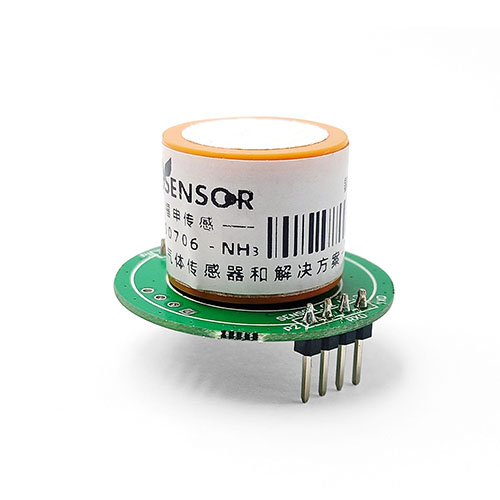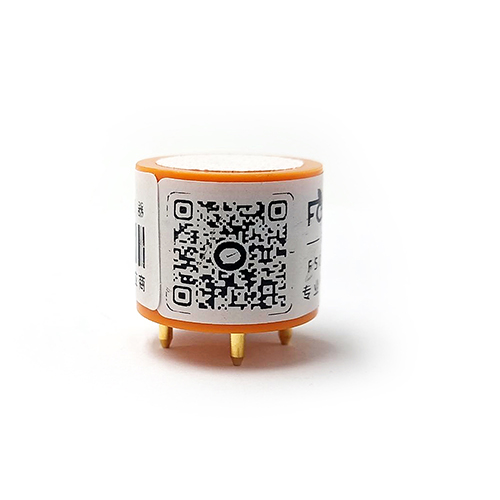Ammonia gas sensor market development
Ammonia is a colorless gas with a pungent odor. It is mainly used in chemical industry production such as fertilizer production, alkali production, pharmaceuticals, plastics, resins, dyes, and synthetic fibers. It is also often used as a refrigerant. Ammonia is a toxic and harmful gas that is highly irritating and corrosive to the human body. Inhaling high concentrations of ammonia can cause breathing difficulties, pulmonary edema, and even death. Therefore, the detection and monitoring of ammonia gas are of great significance to ensure personal safety and environmental safety.
Ammonia gas sensor
Ammonia gas sensor is an important instrument for detecting ammonia concentration and is widely used in industry, agriculture, medical care, environmental protection and other fields. At present, Ammonia gas sensors mainly include optical, infrared, Electrochemical Ammonia Gas Sensor Module and other types.
The electrochemical sensor is currently the most widely used ammonia sensor. Its principle is to use electrochemical reactions to convert ammonia into electrical signals to detect ammonia concentration. Electrochemical sensors have the advantages of fast response, high sensitivity, and low cost, but they also have shortcomings such as poor stability and susceptibility to interference.
Optical sensors are sensors that detect ammonia concentration based on optical principles, including light absorption, light scattering, spectral analysis, etc. Optical sensors have the advantages of high sensitivity, good selectivity, and strong stability, but they also have disadvantages such as high cost and large size.
The infrared sensor is a sensor that detects ammonia concentration based on the infrared spectrum absorption principle. The principle is to use the near-infrared absorption peak of ammonia to detect ammonia concentration. Infrared sensors have the advantages of high sensitivity, good selectivity, and strong stability, but they also have disadvantages such as high cost and large size.
With the continuous development of science and technology, the technical level of ammonia gas sensors is also constantly improving.
Ammonia gas sensor market development:
1.Improve sensitivity and selectivity
Improving sensitivity and selectivity is an eternal theme in the development of gas sensor technology. For ammonia gas sensors, improving sensitivity and selectivity can better meet the needs of different application scenarios.
2.Reduce costs
Reducing costs is the key to the commercial application of gas sensors. In the future, the cost of ammonia gas sensors will be effectively reduced through technological innovation and large-scale production.
3.Miniaturization and integration
Miniaturization and integration are important trends in expanding the application range of gas sensors. In the future, ammonia gas sensors will be smaller and more portable, and can be used in more fields.
4.Intelligent
Intelligence is an inevitable trend in the future development of gas sensors. In the future, ammonia gas sensors will be combined with artificial intelligence, Internet of Things and other technologies to achieve automated and intelligent detection and monitoring.
Specifically, the Ammonia gas sensor market can be explored from the following aspects in the future.
5.Develop new sensitive materials
New sensitive materials are key to improving the sensitivity and selectivity of gas sensors. In the future, new sensitive materials based on nanomaterials, composite materials, etc. can be developed to improve the performance of gas sensors.
6.Apply artificial intelligence technology
Artificial intelligence technology can help gas sensors achieve automated and intelligent detection and monitoring. In the future, artificial intelligence technology can be applied to algorithm optimization and data analysis of gas sensors to improve the performance and application effects of gas sensors.
7.Incorporate IoT technology
Internet of Things technology can realize the interconnection between gas sensors and other devices. In the future, IoT technology can be applied to remote monitoring and data transmission of gas sensors to improve the application efficiency and convenience of gas sensors.
All in all, with the continuous development of technology, the performance of ammonia gas sensors will be further improved and the application scope will be further expanded. In the future, ammonia gas sensors will play a more important role in ensuring personal safety and environmental safety.







